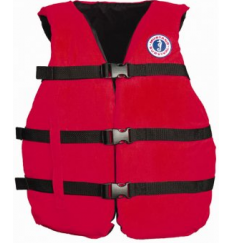[codepeople-post-map] We are proud to offer the best life vests on the market. Currently, in stock Universal Life Vests from Mustang Survival.
We are proud to offer the best life vests on the market. Currently, in stock Universal Life Vests from Mustang Survival.
Please always wear and don your Canadian approved lifevest, it’s the Law!
From the Mustang website
“Serious products for serious users”, Mustang Survival
“For more than 45 years, we have outfitted some of the most demanding users working in the world’s most unpredictable and hazardous environments. From commercial fishermen and industrial marine workers to law enforcement officers, the Coast Guard and even NASA astronauts, we’ve designed and provided professional users like you with industry leading personal protection equipment. As a serious user, you can, without a doubt, rely on our lifesaving solutions so you can focus on what you do best.”
Please carefully read the important information from the Transport Canada website for additional info on the mandatory life saving equipment requirements for all vessels;
“Having the right equipment on board can save your life. If something goes wrong on the water, you’ll be much better prepared to deal with it if you have the right equipment on board, if it’s in good working order, and if everyone can find it and use it. Remember, the best protection you can give yourself on the water is to wear your lifejacket!
This section starts off by listing the minimum safety equipment that is required on your boat, followed by some extra advice for specific activities. Finally, it offers more information on the equipment you need and how to use it.
Minimum Safety Equipment Requirements
The safety equipment Canada requires you to carry on board is based on the type and length of your boat. It must be on board, in good working order and always easy to reach so that it can be used in an emergency. You can find the length of your boat by reading the manufacturer’s product information or by measuring it yourself (from the front outside surface of the hull shell to the back outside surface of the hull shell – bow to stern).
Remember that these requirements apply only to pleasure craft and are the same whether you own, rent or borrow the boat. This includes typical boats like power boats, sail boats and personal watercraft, as well as less common boats like airboats, air cushion vehicles (hovercraft) and wing in ground effect vessels that are used only for recreation. They also apply to kiteboards.
If you want information on operating a vessel for work or commercial activities (non-pleasure craft), visit www.tc.gc.ca/marinesafety or contact your local Transport Canada Centre.
These requirements do not apply to inflatable self-propelled water toys because they are not designed for use in open water. If you do choose to operate these toys in open water, they will be treated as pleasure craft and subject to the same strict rules. Remember as well that operating a propeller-driven surfboard is against the law in Canada.
The following list of equipment is the minimum that is required. You may want to bring more equipment based on your type of boat, your water activity and the current and forecasted weather and water conditions.”

